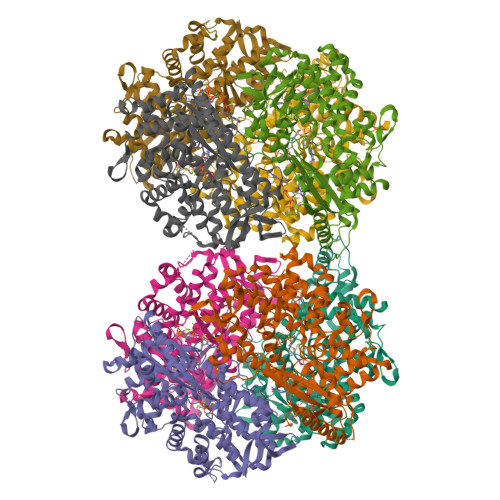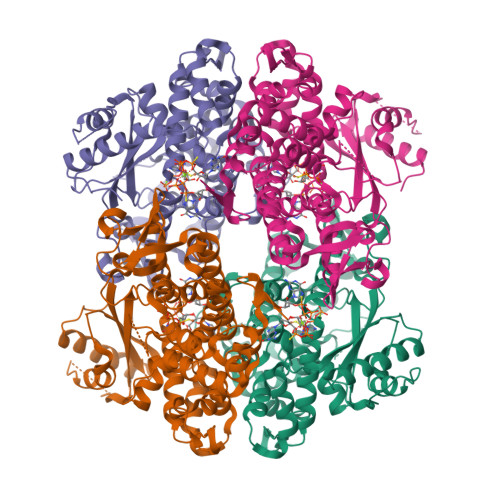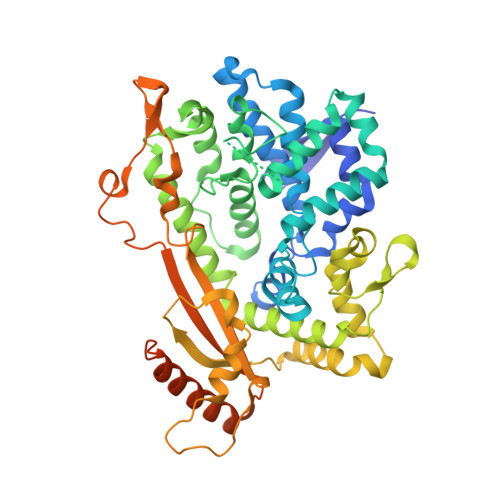Probing the Catalytic Mechanism and Inhibition of SAMHD1 Using the Differential Properties of R p - and S p -dNTP alpha S Diastereomers.
Morris, E.R., Kunzelmann, S., Caswell, S.J., Purkiss, A.G., Kelly, G., Taylor, I.A.(2021) Biochemistry 60: 1682-1698
- PubMed: 33988981
- DOI: https://doi.org/10.1021/acs.biochem.0c00944
- Primary Citation of Related Structures:
7A5Y - PubMed Abstract:
SAMHD1 is a fundamental regulator of cellular dNTPs that catalyzes their hydrolysis into 2'-deoxynucleoside and triphosphate, restricting the replication of viruses, including HIV-1, in CD4 + myeloid lineage and resting T-cells. SAMHD1 mutations are associated with the autoimmune disease Aicardi-Goutières syndrome (AGS) and certain cancers. More recently, SAMHD1 has been linked to anticancer drug resistance and the suppression of the interferon response to cytosolic nucleic acids after DNA damage. Here, we probe dNTP hydrolysis and inhibition of SAMHD1 using the R p and S p diastereomers of dNTPαS nucleotides. Our biochemical and enzymological data show that the α-phosphorothioate substitution in S p -dNTPαS but not R p -dNTPαS diastereomers prevents Mg 2+ ion coordination at both the allosteric and catalytic sites, rendering SAMHD1 unable to form stable, catalytically active homotetramers or hydrolyze substrate dNTPs at the catalytic site. Furthermore, we find that S p -dNTPαS diastereomers competitively inhibit dNTP hydrolysis, while R p -dNTPαS nucleotides stabilize tetramerization and are hydrolyzed with similar kinetic parameters to cognate dNTPs. For the first time, we present a cocrystal structure of SAMHD1 with a substrate, R p -dGTPαS, in which an Fe-Mg-bridging water species is poised for nucleophilic attack on the P α . We conclude that it is the incompatibility of Mg 2+ , a hard Lewis acid, and the α-phosphorothioate thiol, a soft Lewis base, that prevents the S p -dNTPαS nucleotides coordinating in a catalytically productive conformation. On the basis of these data, we present a model for SAMHD1 stereospecific hydrolysis of R p -dNTPαS nucleotides and for a mode of competitive inhibition by S p -dNTPαS nucleotides that competes with formation of the enzyme-substrate complex.
Organizational Affiliation:
Macromolecular Structure Laboratory, The Francis Crick Institute, 1 Midland Road, London NW1 1AT, U.K.






















